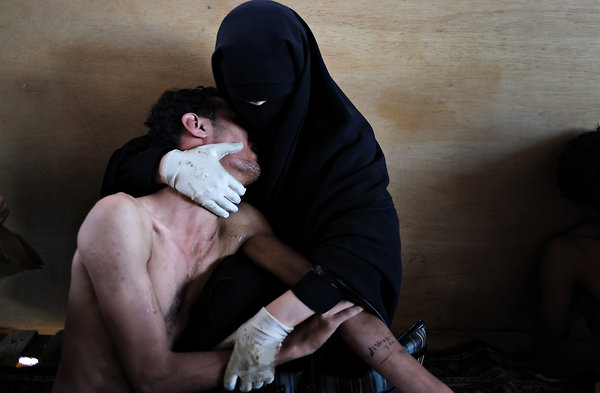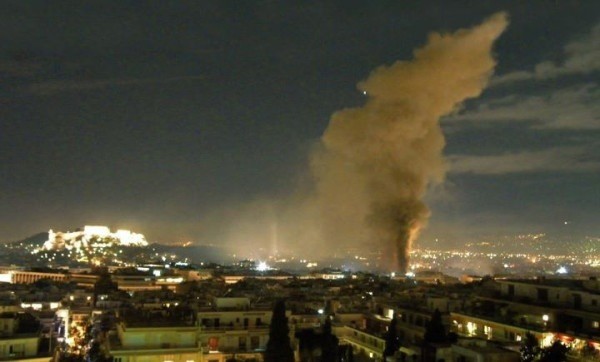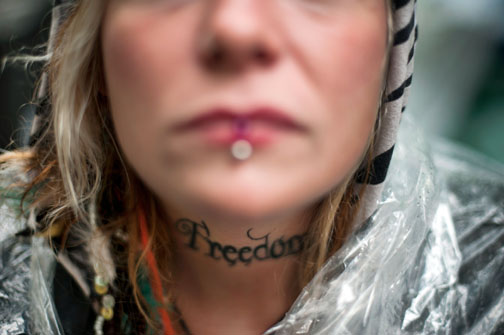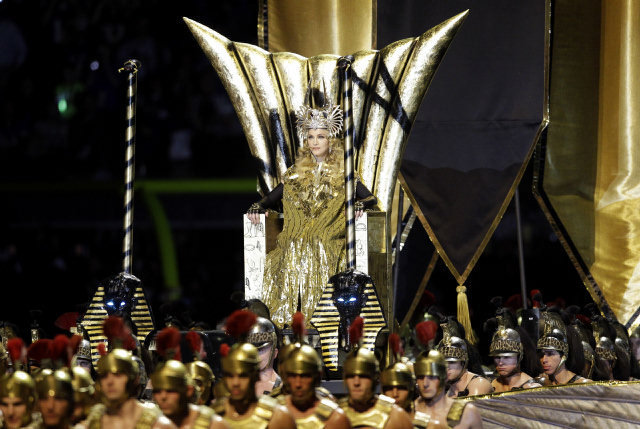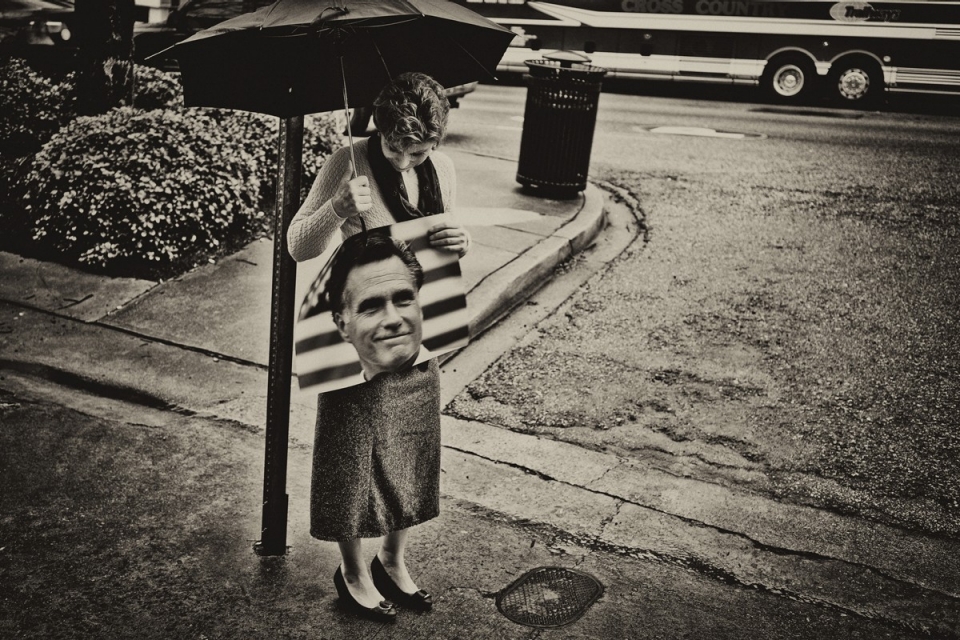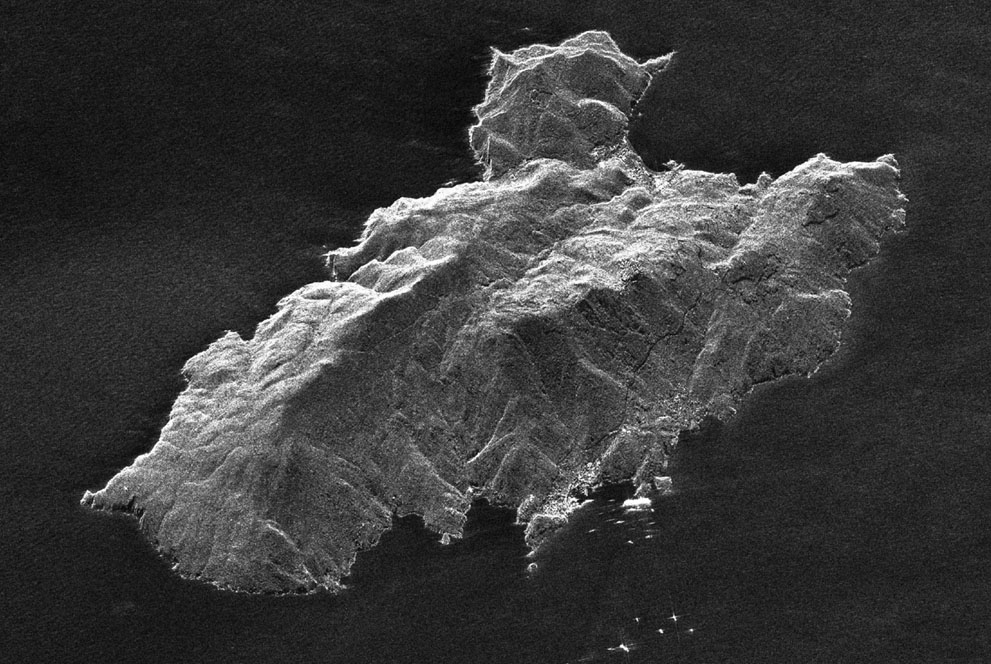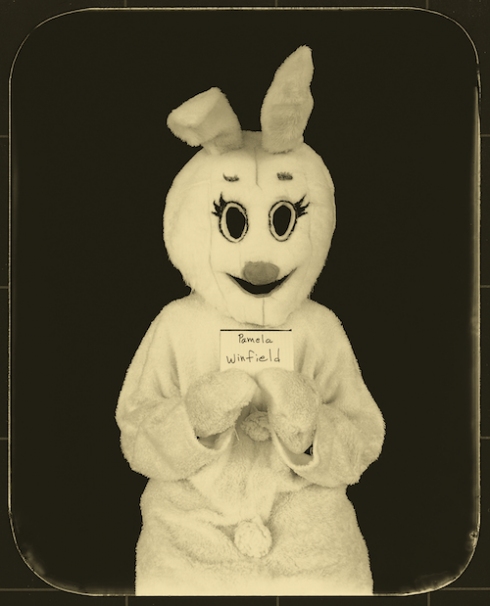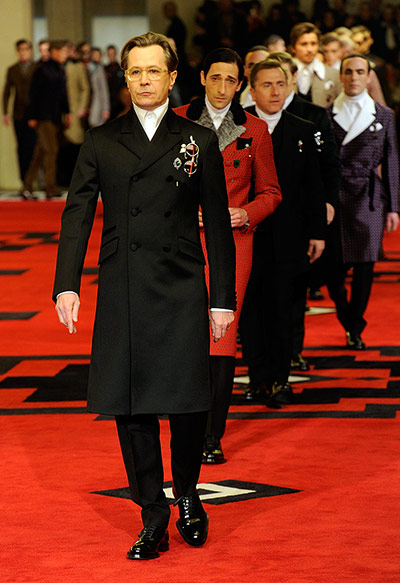Fashion Week in New York has ended, with the show moving on to London, Milan, and Paris. Each event will strive to distinguish itself as it jostles for pride of place on the international circuit, yet one doesn’t have to step back very far to see them as alike as peas in a pod. Which may be one reason why photographers on the fashion beat like to capture double images.
Which side is the mirror image? Does it matter? Isn’t any fashion model already a reproduction of a type that is used to motivate imitation? As with the replicants in Blade Runner, we might come to learn that they, too, have feelings, personalities, and lives, but that is hardly the point. More likely, the process provides just enough human features to ensure conformity while subverting any attempt to further humanize the model or those around her. So it is that we see this model reading, as if she has an interior life of her own, but that interest is then quashed by the duplication that emphasizes her impersonal appearance and replicative function. All models might read, but so what?
One could place the image in a long lineage of paintings of the woman reader, If that could restore enough of an aura of authenticity, the viewer might become interested in a considering a woman’s private experience as it can be found in the act of reading. But that possibility raises the prior question of what one should be looking for in the first place when viewing a double image. One answer might be some assurance of what is real, or some cue regarding how we might know. The double image creates an initial skepticism–which side is reality and which is appearance?–and that in turn prompts more careful scrutiny to identify the reflective surface. Carried far enough, that examination extends to the photograph itself.
Let me suggest that there is much more to be learned than whatever might be gleaned from that philosophical exercise. And one key to unlocking the power of the double is to turn from the exact duplicate to images could be seen as double images, but need not be.
You want uncanny, you got it. Or, if you want to shake off the really disturbing vibe, just pretend that they are two very, very different people and focus on either one or the other. “What a freak” or “What a nice guy” will each work the same–and it doesn’t matter which way you apply them. The power of this photograph, however, comes from the fact that it, too, is a double image, and one that taps a far deeper fear than the first photograph. In the first image, whatever lay under the surface could be assumed to be as docile as the well-groomed body on the soft bench. After all, whatever the content, she’s only reading.
But what if the nice boy in the sweater and the Mad Max outlaw are the same guy? Because they are, of course: each carefully styled in a different idiom, bodies neatly complementary from top to bottom (look at their legs and hands, for example), with similar clothing (the same V-neck color scheme), and, of course, very comfortable together. It’s as if the each could fit comfortably in the other’s skin, each the other’s alter ego, good boy and bad boy, the date you can take home to mother and the figure in every slasher movie looming in the dark outside the window. And, of course, they can be one and the same person.
A subculture dedicated to the production of appearances proves to have more depth than we might think–at least when it becomes a subject for photographic artistry. A world of social display and mechanical reproduction can also be one in which surfaces can be deceiving. In place of surface and depth, however, we might want to think about how we always are choosing between simplicity and complexity, and between familiarity and fear.
Photographs by Carlo Allegri/Reuters and Stephen Lovekin/Getty Images. This is one of several posts I’ve made over the years on double images, although don’t ask me if they form a coherent argument. For the record, you can see those that a quick search pulled up here, here, here, here, here, here, and here.


